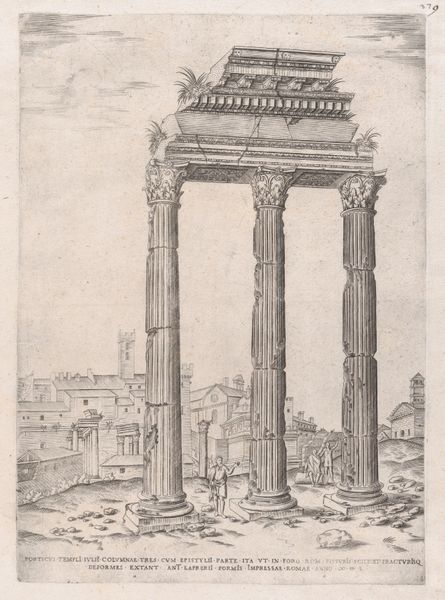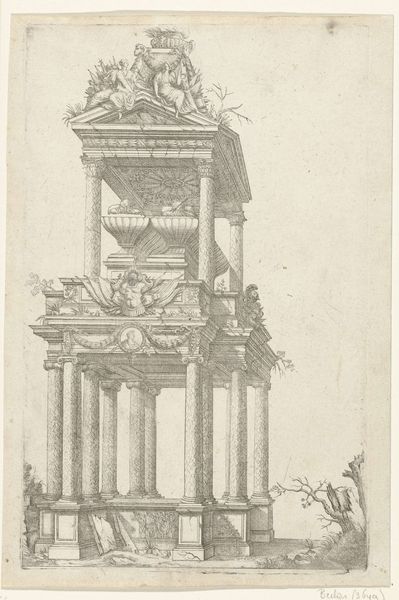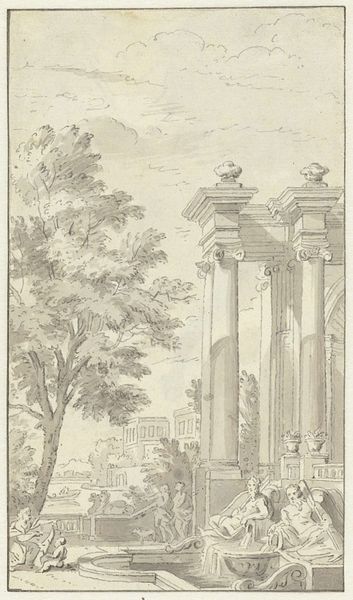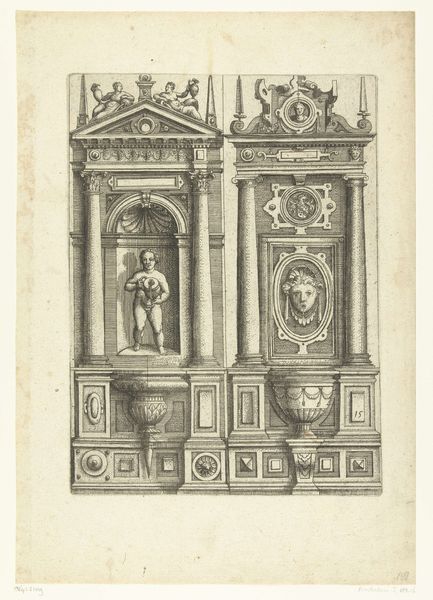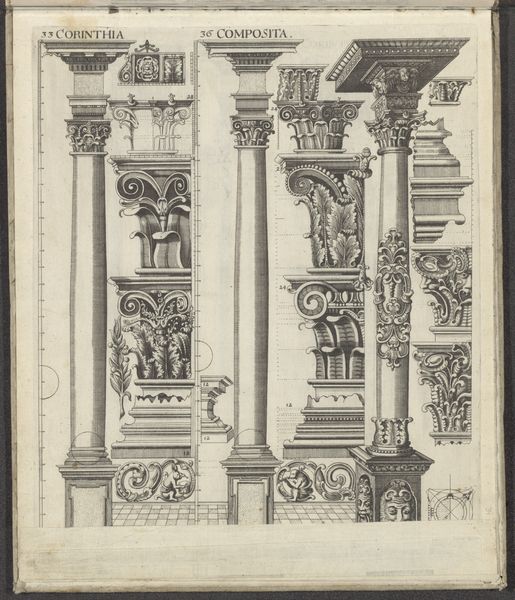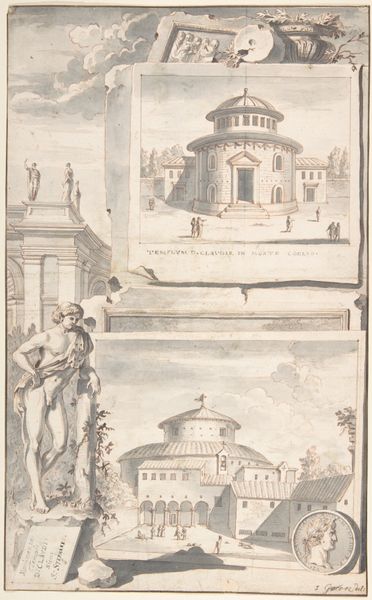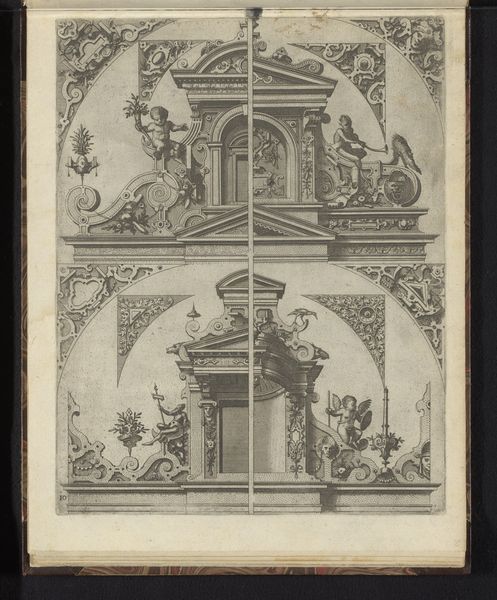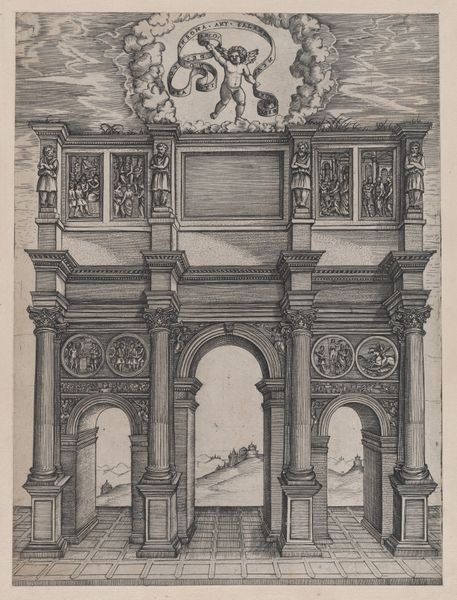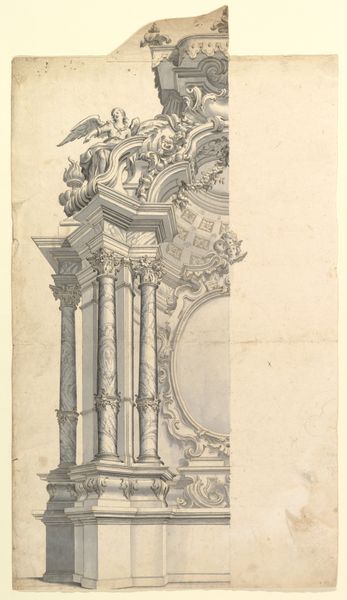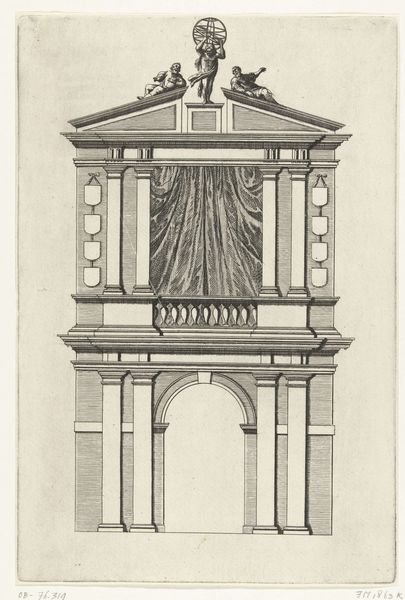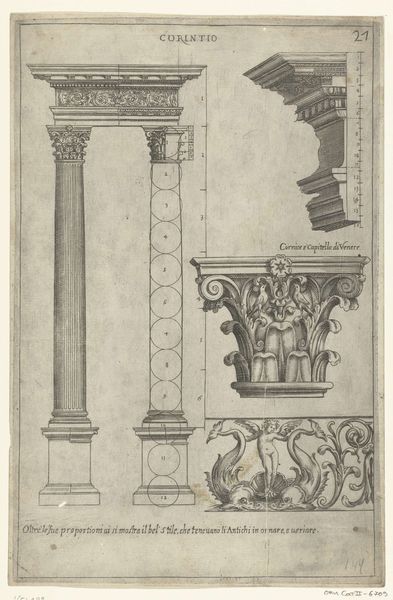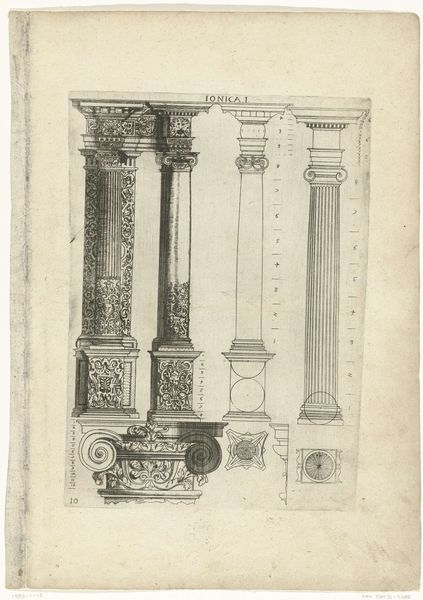
Speculum Romanae Magnificentiae: Temple of Antoninus and Faustina 1530 - 1580
0:00
0:00
drawing, print, engraving, architecture
#
drawing
# print
#
landscape
#
11_renaissance
#
geometric
#
history-painting
#
italian-renaissance
#
engraving
#
architecture
Dimensions: sheet: 11 5/8 x 8 7/16 in. (29.5 x 21.5 cm)
Copyright: Public Domain
Agostino Veneziano etched this print of the Temple of Antoninus and Faustina, part of the "Speculum Romanae Magnificentiae," sometime in the early 16th century. Here, the ruins of the Temple with its Corinthian columns serve as potent symbols of classical antiquity. These columns, with their ornate capitals, evoke the grandeur of Roman architecture and its aspirations to permanence. Yet, nature reclaims the stone where plants sprout from the temple ruins, speaking to time's inevitable triumph over human constructions. Consider how the column motif has permeated Western art and architecture. From the pillars of ancient Greece to the Renaissance revival, the column symbolizes strength, stability, and a connection to the past. But here, the ruined state suggests a more complex narrative. These ruins invoke feelings of nostalgia, melancholia, and contemplation of mortality. The emotional power of the image lies in its ability to evoke a sense of loss and reflection on the transience of human achievement. The presence of these classical symbols underscores the cyclical nature of history.
Comments
No comments
Be the first to comment and join the conversation on the ultimate creative platform.
